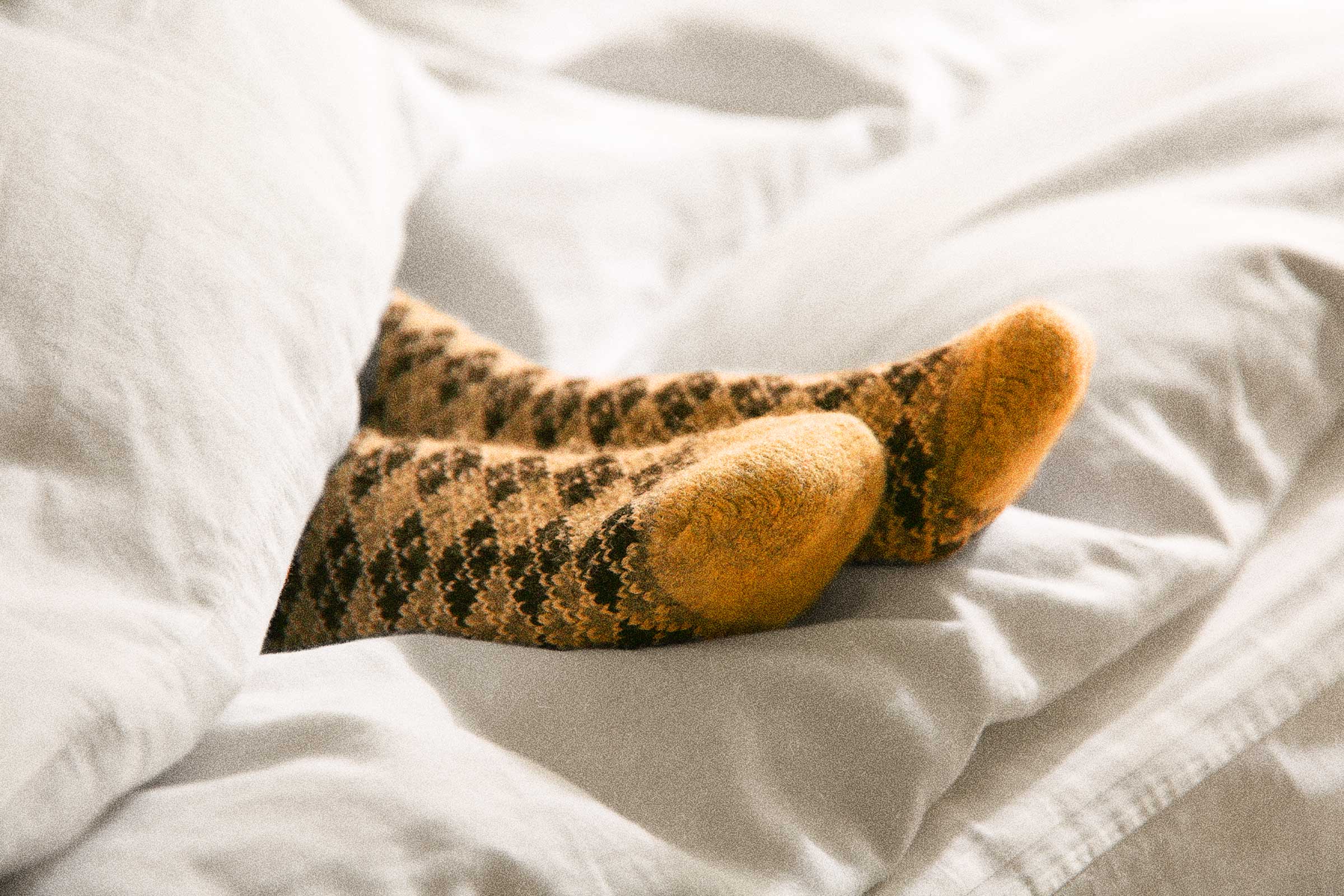Grandma was onto something when she told you to wear socks to bed. In Nordic countries, staying cozy before sleep is part of the tradition of “hygge,” which embraces warmth and comfort as essential for restful nights.
Beyond just feeling snug, warming your feet plays a vital role in sleep. It helps your body cool down just the right way, signaling it’s time to rest.
Core Body Temperature
When the body is exposed to warmth—through a bath, foot soak, or warm socks—it activates cooling mechanisms. Heat causes blood vessels to expand (vasodilate), boosting blood flow to the skin’s surface. This process releases heat from the body, effectively lowering core temperature. As blood moves toward the skin, excess heat transfers out of the body, promoting a cooler internal temperature and aiding sleep.
The body’s sleep-wake cycle is closely linked to core temperature changes. During the day, body temperature peaks in the late afternoon and early evening. At night, it gradually drops, signaling the body to prepare for sleep.
The sleep hormone melatonin also helps lower body temperature, said Dr. Alison Bentley, a medical doctor with more than 30 years of experience treating sleep disorders, in an interview with The Epoch Times. As melatonin is released, body temperature naturally decreases, setting the stage for deep sleep.
Activate Sleep Centers
Wearing bed socks is an easy and effective way to activate the cooling mechanism. A 2018
study showed this simple strategy can improve sleep quality, leading to fewer awakenings, longer sleep duration, and quicker sleep onset. On average, those who wore socks during a seven-hour sleep period fell asleep 7.5 minutes faster, had 7.5 fewer awakenings, and gained 32 extra minutes of sleep. Sleep efficiency also increased by 7.6 percent in sock wearers.
Beyond vasodilation, socks may also influence the hypothalamus, the brain’s temperature control center. Certain neurons (brain cells) in this area respond to warmth by becoming more active, which promotes sleep. Their activity increases at sleep onset and during deep sleep but decreases upon waking. Therefore, keeping your feet warm may help these neurons function optimally, improving sleep quality.
Foot Baths Before Bed
A warm foot bath is another great way to promote restful sleep. A 2024
study showed that soaking your feet in water (104 degrees Fahrenheit or higher) for 10 to 30 minutes before bed is a safe and effective way to improve sleep quality.
A note of caution: People with peripheral neuropathy, such as those with diabetes, should avoid overly hot foot baths to prevent burns.
Foot baths regulate body temperature and provide a relaxing bedtime ritual. Warm water soothes the nervous system, reduces stress hormones, and signals the body that it’s time to wind down.
Room Temperature
Your bedroom’s temperature also affects sleep quality. According to Giles Watkins, a coach and author of “Positive Sleep,” the ideal room temperature for sleep is around 64 degrees Fahrenheit.
A cool sleeping environment supports deeper, more restorative sleep. Watkins explained that keeping the room cooler aligns with the body’s natural cooling process, making falling and staying asleep easier.
In contrast, a bedroom that’s too warm can disrupt the cooling process, leading to difficulty falling asleep and restless nights. Keeping your room comfortably cool can create the optimal conditions for rest.
Practical Tips
Looking to fine-tune your sleep environment? Try these temperature-regulating strategies:
- Optimize your bedroom to prevent heat buildup during the day.
- Lower the thermostat before bed.
- Choose cooler bedding materials.
The body cools down about two hours before sleep, so lowering the thermostat complements this natural temperature drop, Watkins noted.
If you’re looking to cut heating costs, cracking a window may help.
Additionally, choose cotton or wool bed socks (they’re breathable and comfortable), and avoid synthetic fabrics that trap heat.
You can also add calming essential oils like lavender or chamomile to your foot bath for extra relaxation.
Optimizing your sleep environment isn’t just about warming your feet or adjusting the thermostat occasionally; it’s about consistency. Small, regular changes to your routine can lead to better sleep quality night after night.









